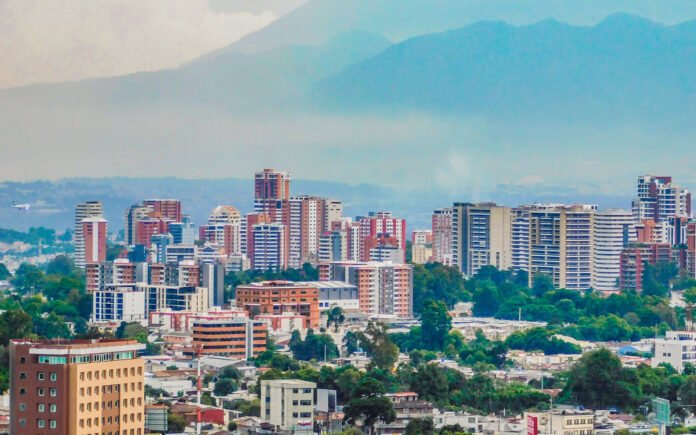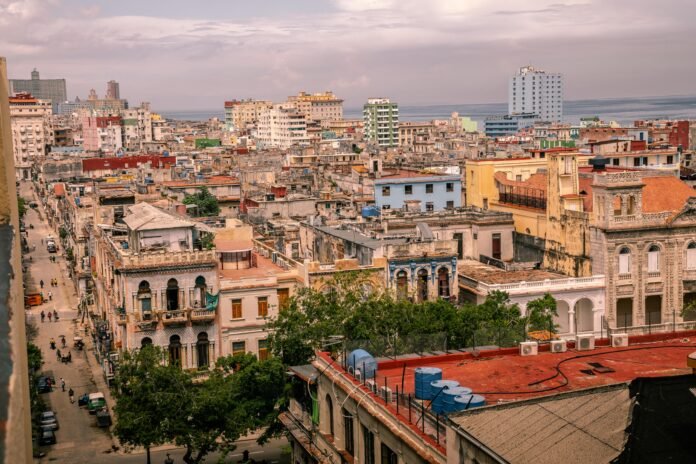Public and private health insurance systems in Nicaragua offer distinct approaches to healthcare coverage, each with its own strengths, weaknesses, and target demographics. While both aim to provide access to medical care, they differ significantly in terms of funding, quality of services, accessibility, and out-of-pocket costs.
Public Health Insurance in Nicaragua
Nicaragua’s public healthcare is primarily managed by the Ministry of Health (MINSA), which offers a universal system delivering free healthcare to all citizens and residents. This includes access to primary, secondary, and emergency care across public clinics and hospitals. Services are available without premiums or copayments, making it a critical option for low-income individuals. However, this system often suffers from long wait times, limited availability of specialized services, and inconsistent quality of care between urban and rural areas.
A more structured form of public insurance is provided by the Instituto Nicaragüense de Seguridad Social (INSS), which is mandatory for salaried workers and available voluntarily for the self-employed. INSS covers a broad range of services, from preventive care and specialist consultations to hospitalization and lab exams. It collaborates with both public and approved private facilities, known as EMPs. Premiums are relatively low (around $15–$18 per month), and the plan includes dependents, making it attractive for working families. Community-based models like MOSAFC further strengthen the public system by emphasizing preventive care and outreach in underserved regions.
Private Health Insurance in Nicaragua
Private insurance, by contrast, is centered around individualized plans that offer quicker and more comprehensive services—particularly in urban centers like Managua. Providers like Seguros America lead the market with packages such as Mi Salud, which offers up to $1 million in coverage with low deductibles and access to top-tier hospitals like Vivian Pellas. Plans cost approximately $800–$1,200 annually, significantly more than public options but with fewer delays and better facilities.
Hospitals themselves also offer insurance-like memberships. For instance, Vivian Pellas Metropolitan Hospital’s Club de Salud offers direct discounts on emergency services, lab tests, and medications for a monthly fee ranging from $30–$60 for adults. International insurers like Cigna and Allianz serve expats and wealthier Nicaraguans, with plans that include global coverage and medical evacuation.
Similarities and Differences
Both public and private systems provide coverage for essential health services, including hospitalization, emergency care, and specialist consultations. However, public insurance is largely free or low-cost, while private insurance requires higher premiums but offers faster, higher-quality care. Public care is more accessible nationwide, whereas private services are concentrated in cities and better suited for individuals seeking personalized or premium-level healthcare.
One common feature is that both systems include some level of preventive and maternal care, although public options are more community-oriented, while private plans focus on advanced diagnostics and convenience.
Top 5 Public Health Insurance Programs in Nicaragua
Nicaragua’s public health insurance system is structured to provide basic to comprehensive healthcare to all citizens, with various programs tailored to different population groups. Below are the top five public health insurance programs currently available in Nicaragua, including their costs, services, eligibility, financial aspects, and consumer satisfaction indicators.
1. Ministry of Health (MINSA) Universal System
- Cost: Free of charge for all citizens and legal residents.
- Available Services/Coverage Features: Offers universal access to primary care, specialist consultations, hospitalization, maternal and child health, vaccination, and emergency services. Care is delivered through a nationwide network of public hospitals and health centers.
- Open for All or Limited: Open to everyone—universal coverage regardless of income, employment status, or age.
- Core Financial Features: Fully state-funded through national tax revenues; patients do not incur out-of-pocket expenses.
- Consumer Satisfaction Score: Moderate (approx. 6.5/10). Users appreciate the free access, but common complaints include long wait times, limited availability of medications, and overcrowded facilities.
2. Instituto Nicaragüense de Seguridad Social (INSS)(Official website: https://www.inss.gob.ni/)
- Cost: Salaried employees contribute through payroll deductions; informal sector workers pay voluntarily (approx. US$15–$18/month).
- Available Services/Coverage Features: Comprehensive health benefits including general and specialized consultations, diagnostic tests, medications, hospital care, maternity, and preventive services. Also covers dependents like children under 12 and pregnant spouses.
- Open for All or Limited: Mandatory for salaried workers; voluntary enrollment available for informal and self-employed workers through “Seguro Facultativo de Salud.”
- Core Financial Features: Funded by employee and employer contributions; includes access to both public and private service providers under EMP (Empresas Médicas Previsionales).
- Consumer Satisfaction Score: High among formal workers (approx. 7.5/10), due to access to better infrastructure and reduced wait times through private clinics.
3. MOSAFC (Modelo de Salud Familiar y Comunitario)
- Cost: Free, integrated into MINSA’s public health system.
- Available Services/Coverage Features: Focuses on health education, disease prevention, vaccination, and access to family doctors and community health brigades. Key services include prenatal care, child nutrition monitoring, and chronic disease prevention.
- Open for All or Limited: Open to all, especially targeted at rural and underserved populations.
- Core Financial Features: Government-financed through national health budgets and international aid programs; no premiums or copays.
- Consumer Satisfaction Score: Generally positive (approx. 7/10), particularly in rural areas where access to basic healthcare has improved significantly.
4. Social Assistance Medical Benefits
- Cost: Free or highly subsidized depending on the vulnerability status of the individual.
- Available Services/Coverage Features: Tailored for elderly, disabled individuals, and extremely poor populations. Services include primary healthcare, medication support, rehabilitation services, and in some cases, transportation to clinics.
- Open for All or Limited: Limited to qualifying vulnerable populations based on socio-economic assessments.
- Core Financial Features: Publicly funded through government social welfare programs; often supported by NGOs or international partners.
- Consumer Satisfaction Score: Variable (approx. 6/10), with satisfaction higher among urban poor than in remote areas due to logistical challenges.
5. Regional Public Hospitals and Clinics
- Cost: Free emergency care for all residents.
- Available Services/Coverage Features: Decentralized hospital and clinic networks provide basic outpatient services, emergency care, and maternal-child services at the departmental level.
- Open for All or Limited: Open to all, but accessibility depends on geographic location.
- Core Financial Features: Fully government-funded; facilities operate under the budget of local health authorities.
- Consumer Satisfaction Score: Mixed (approx. 6/10). While accessibility has improved, resource shortages and disparities in care quality across regions persist.
Top Private Health Insurance Providers in Nicaragua
Nicaragua’s private health insurance market, while smaller than the public system, caters to individuals and families seeking faster access, higher-quality facilities, and a broader range of services. These plans are especially popular among expatriates, upper-middle-income Nicaraguans, and businesses offering corporate healthcare packages. Below are the top private health insurance providers in Nicaragua, with a breakdown of their cost structures, benefits, and customer satisfaction.
1. Seguros América(Official website: https://www.segurosamerica.com.ni/)
- Cost: Plans start at approximately US$40–$100/month for individuals, with family plans costing more depending on coverage level and age.
- Available Services/Coverage Features: Offers a wide range of services including outpatient visits, emergency care, surgeries, specialist consultations, maternity, diagnostics, and hospitalization. Optional dental and vision packages are also available.
- Open for All or Limited: Open to individuals, families, and businesses; subject to medical underwriting and age limits (typically up to 65 years for new applicants).
- Core Financial Features: Premium-based model with deductibles and co-payments; network-based service with options for reimbursement outside the network.
- Consumer Satisfaction Score: High (approx. 8/10). Customers value the wide provider network, bilingual support for expats, and relatively efficient claims processing.
2. ASSA Compañía de Seguros(Official website: https://www.assanet.com/ni)
- Cost: Monthly premiums range from US$35 to over US$150 depending on age, coverage level, and deductible choices.
- Available Services/Coverage Features: Comprehensive plans include preventive care, specialist care, lab tests, hospitalization, and international coverage options. Popular for customizable health plans and corporate group policies.
- Open for All or Limited: Available to Nicaraguan nationals, residents, and expatriates; subject to underwriting and exclusions based on pre-existing conditions.
- Core Financial Features: Deductible and co-pay system; discounts for family/group enrollments; broad national hospital network and regional partnerships for care abroad.
- Consumer Satisfaction Score: Good (approx. 7.5/10). Users report strong customer service and flexibility, though some note higher premiums for older clients.
3. Lafise Seguros(Official website: https://www.lafise.com/seguros)
- Cost: Premiums generally range from US$30 to US$120/month, varying by plan type and applicant age.
- Available Services/Coverage Features: Health insurance plans include access to private clinics, surgeries, chronic disease management, and optional international travel coverage. Telemedicine and wellness services are increasingly available.
- Open for All or Limited: Open to individuals, families, and businesses. Enrollment subject to age restrictions and health screenings.
- Core Financial Features: Uses a co-payment system; offers premium discounts for healthy lifestyle incentives and preventative care adherence.
- Consumer Satisfaction Score: Moderate to High (approx. 7.5/10). Customers highlight ease of enrollment and access to top-tier clinics, although some cite delays in reimbursements.
4. Mapfre Nicaragua(Official website: https://www.mapfre.com.ni/)
- Cost: Monthly rates start at around US$40 for basic plans, with comprehensive coverage reaching US$150–$200 per month.
- Available Services/Coverage Features: Includes general and specialist consultations, surgery, hospitalization, international medical assistance, and 24/7 emergency service. Plans may include life and accident coverage as add-ons.
- Open for All or Limited: Available to residents and non-residents; policies are generally limited to those under 65 years at entry.
- Core Financial Features: Offers tiered plans with different co-pay percentages; international claims possible through Mapfre’s global network.
- Consumer Satisfaction Score: Good (approx. 7/10). Known for reliability and international assistance; slightly lower scores for customer service compared to competitors.
5. BMI Seguros Nicaragua(Official website: https://www.bmicos.com/nicaragua/)
- Cost: Premiums begin at approximately US$50/month, scaling up with expanded benefits and age of insured.
- Available Services/Coverage Features: Offers premium health plans with broad international coverage, access to regional and U.S.-based hospitals, maternity care, oncology services, and second-opinion programs.
- Open for All or Limited: Open to Nicaraguan residents and international clients, subject to underwriting and age limits (typically up to 65).
- Core Financial Features: Premium-based with annual deductible options; known for high-limit plans and global portability.
- Consumer Satisfaction Score: High (approx. 8/10). Especially favored by wealthier clients and expats for its seamless global coverage and fast claim resolution.
READ MORE: Private and public health insurance of Jamaica (Make informed choices)


